The cost to cut down a tree in Delaware varies based on factors like the tree’s size, location, and the job’s complexity.
The cost of tree removal in Delaware is $1,225 for a 25 ft. tree, while the national average cost for tree removal is $1,478 for a tree of comparable size.
Additional services, such as stump removal or limb chipping, can add to the cost.
The average costs for tree removal in Delaware range from $270 to $2,500, depending on the size and complexity of the job. There are several factors that affect cost such as:
- Tree height
- Number of branches
- Trunk diameter
- Tree location
- Type of tree
- Access to the tree
- Time of Year
Below are some price ranges for trees by height. Cost will increase if access to the tree as well as obstacles around the tree.
| Tree Size | Average Cost Range |
|---|---|
| Small Tree | $200 - $450 |
| Medium Tree | $450 - $750 |
| Large Tree | $750 - $2,000 |
Small tree removal cost
For small tree removal in Delaware, the cost typically ranges from $200 to $450.
The main factors affecting cost will be tree species and access.
Medium tree removal cost
Tree removal costs for medium-sized trees in Delaware can range from $450 to $750.
Factors like the height and location of the tree can significantly impact the removal cost. For example, a medium-sized tree near power lines or other structures might require more specialized equipment and expertise, leading to a higher cost.
As with small tree removal, it’s essential to consider the stump that remains after removing the tree. Stump removal and grinding services can help you reclaim the space and ensure your property remains safe and visually appealing.
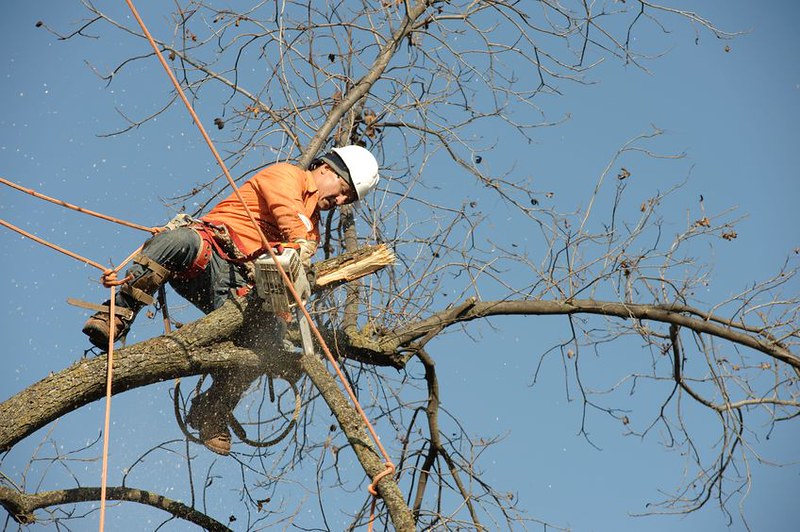
Source: Flickr
Large tree removal cost
Large tree removal in Delaware can be quite costly, ranging from $750 to $2,000 or higher.
Factors such as the height, accessibility, and equipment required can significantly impact the overall cost of removing a large tree. For example, a large tree near power lines or other structures might require more specialized equipment, a larger crew, and additional precautions, resulting in a higher cost.
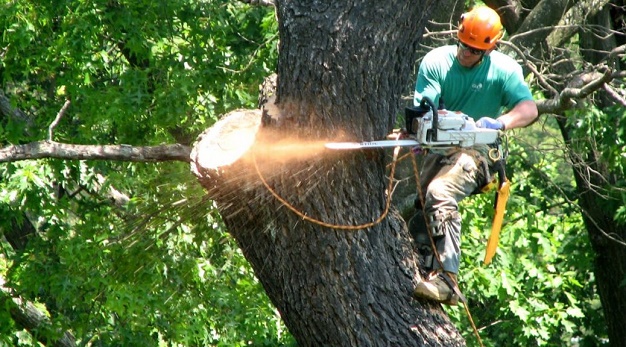
Source: Flickr
Factors affecting tree removal cost
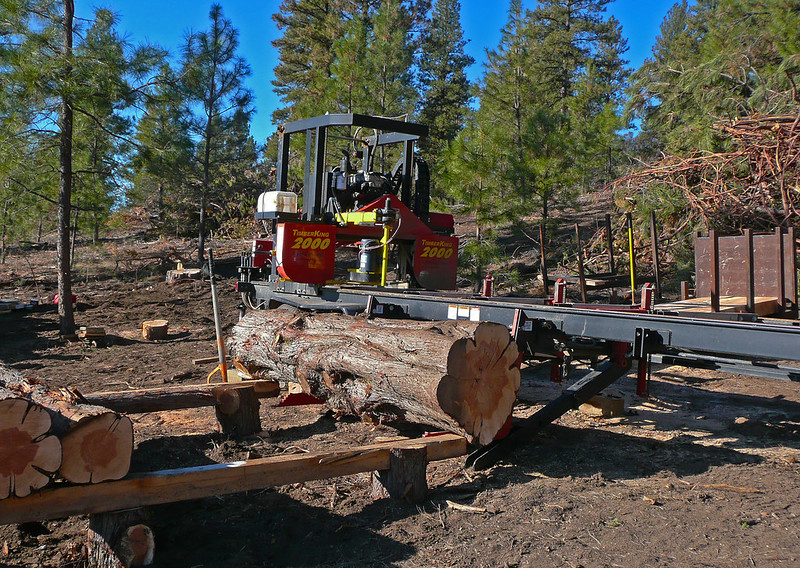
Source: Flickr
Several factors can influence the tree removal cost in Delaware. These include:
- Tree’s height. The tree’s height significantly affects the overall cost, as taller trees require more time and effort to remove.
- Accessibility. Accessibility is another crucial factor, as trees that are difficult to reach or located near structures will likely result in a higher cost.
- Equipment used. The type of equipment required for tree removal also impacts the cost. Specialized equipment may be necessary for challenging removals, such as those involving power lines or other hazardous conditions.
Local tree services in Delaware
When it comes to tree removal in Delaware, you have several options. Local tree services are available throughout the state, offering a wide range of services, including tree removal, trimming, landscaping, and lawn care. Some of
Delaware’s top tree removal services include Gallo Tree Service, Kerns Brothers, Strobert Tree Services, Popular Tree Services, TreeRemovalUSA.com, and Paul Bunyan’s Tree Service Inc.
By researching and comparing local tree services, you can ensure that you’re hiring a reputable and reliable company to handle your tree removal needs. It’s always a good idea to request quotes from multiple companies to better understand the costs involved and the services offered.
Emergency tree removal services
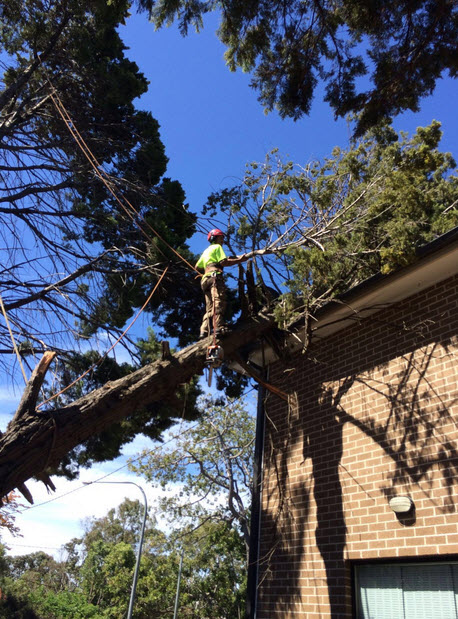
Source: Flickr
In cases where urgent tree removal is necessary, such as after a storm or other unexpected events, emergency tree removal services are available in Delaware. These services are typically available 24/7 and can help you address any immediate safety risks associated with damaged or fallen trees.
It’s essential to have a plan for emergency tree removal situations, including knowing which tree service providers offer emergency services and having their contact information readily available.
Additional tree services offered
In addition to tree removal, several other tree services are available in Delaware to help maintain the health and appearance of your trees. These services include:
- Tree trimming and pruning
- Stump removal and grinding
- Tree maintenance and care
By regularly tending to your trees, you can ensure their longevity and continued contribution to the beauty of your property.
In the following subsections, we’ll explore these additional tree services in more detail, discussing their processes, benefits, and costs.
Tree trimming and pruning
Tree trimming and pruning involve the removal of dead, diseased, or overgrown branches from a tree to maintain its health and aesthetic.
Regular trimming and pruning can improve the overall well-being of a tree, reduce the likelihood of disease, and enhance its visual appeal. In addition, proper trimming and pruning can help prevent damage to property and persons from falling branches.
The cost for tree trimming and pruning services in Delaware typically ranges from $150 to $450. This cost can vary depending on factors such as the size and location of the tree, as well as the specific trimming and pruning requirements.
Stump removal and grinding
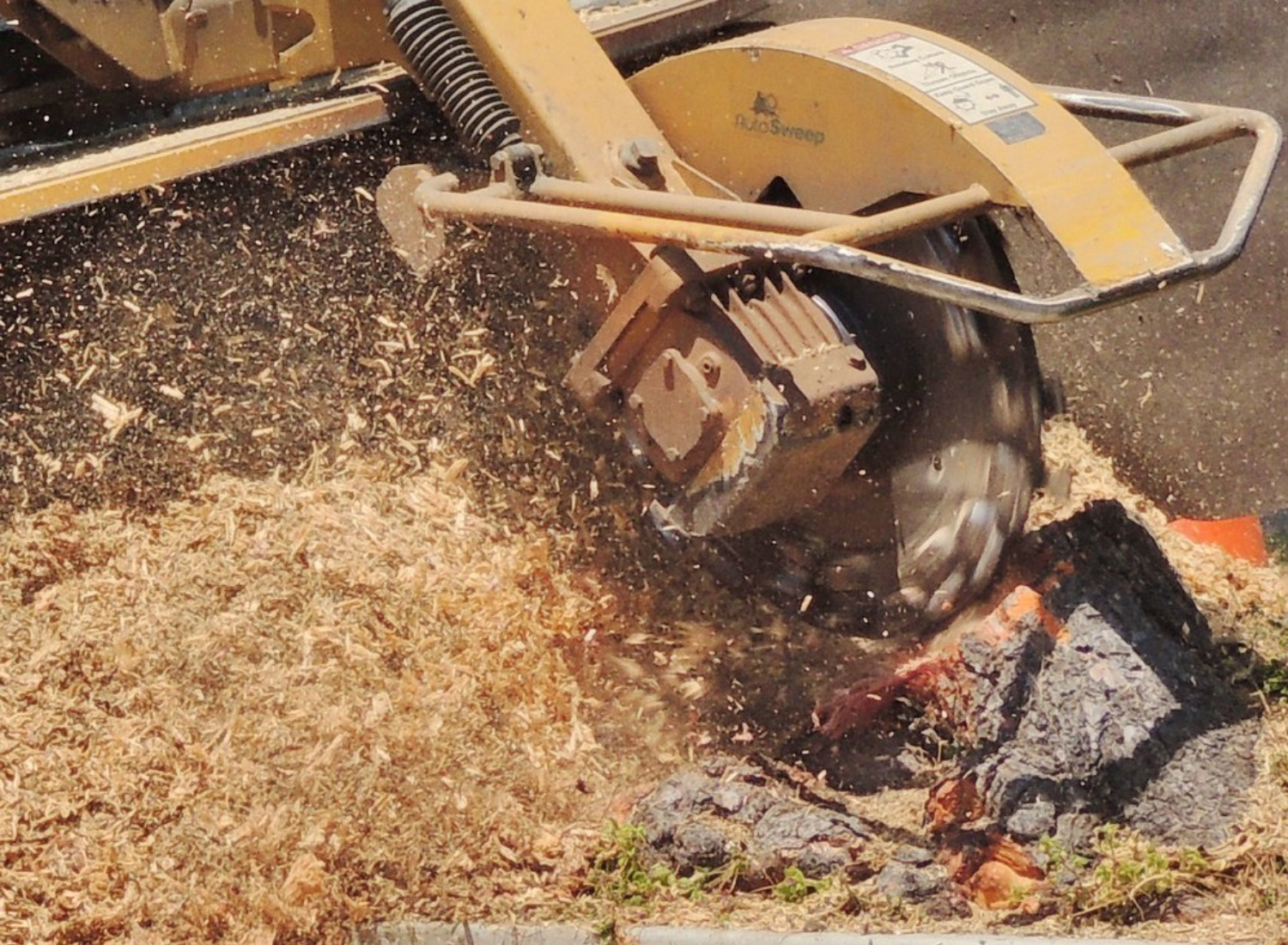
Source: Flickr
After removing a tree, the stump that remains can be unsightly and potentially hazardous. Stump removal and grinding services are available in Delaware to help you address this issue.
The process involves removing the tree stump from the ground and grinding it down to surface level, allowing you to reclaim the space and prevent potential tripping hazards.
The stump removal and grinding cost in Delaware typically ranges from $70 to $250, depending on the size and location of the stump.
Tree maintenance and care
Tree maintenance and care services are designed to ensure the health and longevity of your trees. These services may involve pruning, trimming, fertilizing, and pest control. Regular tree maintenance and care can help prevent disease, insect infestations, and other issues that can lead to the need for tree removal.
The cost of tree maintenance and care services in Delaware varies depending on the type of service required. Generally, pruning and trimming services are the most economical, while tree removal is the most costly.
Benefits of professional tree removal in Delaware
Opting for professional tree removal in Delaware brings a multitude of benefits:
- Safety: Professionals are trained to handle tree removal safely. They have the equipment and expertise to deal with potential hazards, ensuring that the tree is removed without causing damage to property or injury.
- Efficiency: With their experience, tree removal experts can assess the best method to remove a tree quickly, saving homeowners time and reducing potential disruptions.
- Cleanup: After the tree has been removed, professionals typically handle the cleanup, ensuring that no debris or unwanted remnants are left behind. This can be especially beneficial for large trees or those near buildings.
DIY vs. professional services for tree removal
Tree removal is challenging and potentially hazardous, requiring consideration of safety, efficiency, and long-term outcomes. When contemplating tree removal, homeowners are often torn between doing it themselves (DIY) and hiring professionals. Let’s discuss the merits and drawbacks of both approaches:
DIY tree removal
Pros:
- Cost Savings: The primary reason homeowners consider DIY is to save money. By not hiring professionals, one might bypass labor costs.
- Self-paced: Homeowners can work independently without coordinating with external schedules.
- Personal Satisfaction: For some, performing tasks on their property creates a sense of accomplishment.
Cons:
- Safety Risks: DIY tree removal can be extremely dangerous without proper training and equipment. Risks include falling trees or branches, tool injuries, or accidentally impacting nearby structures.
- Inefficiency: Without professional-grade equipment and experience, the process can be time-consuming and exhausting.
- Incomplete Removal: Homeowners may struggle with stump removal or deep-rooted trees.
- Potential Long-term Issues: If a tree isn’t removed correctly, it can lead to problems down the line, like new, unwanted growth or pest infestations.
Professional S=services
Pros:
- Safety: Professionals are trained to handle the inherent risks of tree removal. They possess the necessary safety gear and equipment to perform the task safely.
- Efficiency: Experience and the right tools mean professionals can remove trees faster and cleaner than most DIYers.
- Comprehensive Service: Many professional services offer comprehensive packages, including tree removal, stump grinding, and cleanup.
- Liability and Insurance: Reputable tree removal companies are insured, meaning if anything goes wrong, they cover the damages, reducing homeowner liability.
Cons:
- Cost: Hiring professionals can be expensive, especially for larger trees or challenging locations.
- Availability: During peak seasons, securing a booking with a reputable service might require some waiting.
Tips for saving on tree removal costs
To make tree removal more affordable, consider the following tips:
- Multiple quotes: Always obtain quotes from multiple tree service providers. Prices can vary significantly between companies, and comparing quotes can help you find the best deal.
- Group services: If you have more than one tree to remove or need additional services, consider grouping them. Some companies offer discounts for removing multiple trees or combining tree removal with stump grinding.
- Off-season tree removal: As mentioned earlier, considering tree removal during off-peak seasons can sometimes secure a discounted rate.
- Local services: Opting for a local service might reduce costs, as companies that travel long distances might charge additional fees.
Tree removal regulations in Delaware
When planning a tree removal project, it’s important to be aware of the regulations in place in Delaware.
These regulations protect trees on public and private property and ensure tree removal is carried out safely and legally. In some cases, permits may be required for tree removal, and failing to adhere to these regulations can result in penalties or fines.
In the following subsections, we’ll discuss the specific regulations relating to tree removal on public and private property in Delaware.
Public property tree removal
For tree removal on public property in Delaware, a permit must be obtained from the local Tree Commission or other applicable governing body.
This ensures that the tree removal is carried out safely and in accordance with local regulations. Some cities, such as Wilmington, have specific regulations concerning tree removal on public property.
Private property tree removal
In Delaware, no permit is necessary for the removal of trees on private property. However, it’s important to verify local regulations before commencing tree removal on private property to ensure that all regulations are adhered to and that the tree removal is carried out safely and legally.
By taking the time to research and understand the tree removal regulations in your area, you can ensure that your project is compliant with local laws and avoid any potential issues or penalties.
Safety and environmental considerations for DYI'ers
If you’re considering tackling a tree removal project on your own, it’s essential to prioritize safety and environmental considerations. Tree removal can be dangerous, and without proper precautions and expertise, you could put yourself and others at risk.
In addition, improper tree removal can cause damage to the environment, such as soil erosion and damage to surrounding vegetation.
The following subsection will provide some tree removal safety tips for DIY enthusiasts.
Tree removal safety tips
When attempting DIY tree removal, it’s crucial to use protective gear, such as safety goggles, gloves, and a hard hat, to protect yourself from potential injuries caused by falling branches or flying debris.
Additionally, ensure you have the proper equipment for the job, such as a chainsaw, ladder, and rope to help guide the tree as it falls.
Ensuring the tree falls in the desired direction is essential to prevent damage to property, power lines, and other potential hazards. It’s also a good idea to have a spotter help guide the tree during the removal process and plan for the disposal of the tree once it has been removed.
FAQ's
Tree removal in Boise generally costs between $350 and $490, with an average cost of $420 for trees on private property.
This cost includes the removal of the tree, as well as the disposal of the tree and any debris. It does not include the cost of stump grinding or tree trimming.











